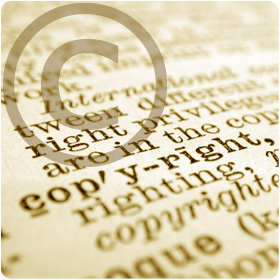 Do you have a book, song, report, or any other personal creations you’d like to have copyrighted? Not sure how to go about getting your documents federally secured from anyone stealing them. Well, here’s a few basic things you need to know to get started on your copyright:
Do you have a book, song, report, or any other personal creations you’d like to have copyrighted? Not sure how to go about getting your documents federally secured from anyone stealing them. Well, here’s a few basic things you need to know to get started on your copyright:
»In the United States, a copyright holder have exclusive rights to his or her work. Those rights are protected by the U.S. Copyright Law.
- »You do not have to have a legal copyright symbol (“©”) placed on or associated with your work for it to be considered legally copyrighted.
- »Any work that has been created (i.e. recorded songs, or written document) it is automatically copyrighted. But, you should use the copyright symbol just to remind people that it is copyrighted.
- »Copyright “rights” includes: the right to distribute, write, display, or perform their work; also to create a derivative right (i.e. like when Alice Walker’s novel “The Color Purple later became a movie)
- »Outside parties wanting to use your work or attribute, must first seek permission to do so. Or give “credit” to the original author if their work is used in magazines, websites, articles, etc.
»Ideas, facts, and data are NOT protected by copyright law. Logos and taglines aren’t either. However, these things may be protected by trademark or patent law.
Also, “Fair Use” allows someone to use copyrighted works in commentaries, parodies, news stories, research, and education. Four factors determine is a work is “fair use”:
1. the purpose and character of the use
2. the nature of the copyrighted work
3. the amount and substantiality
4. the effect of the use on the mark
If anyone infringes on the use of your copyrighted materials, you can sue for damages or recoup loss profits.
To learn more about how to file for copyrights, go to www.copyrights.gov or the non-profit organization www.copyrights.com.



